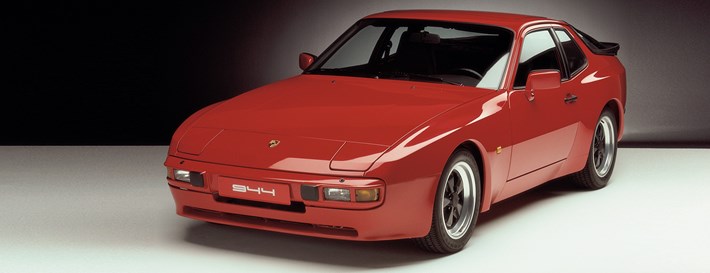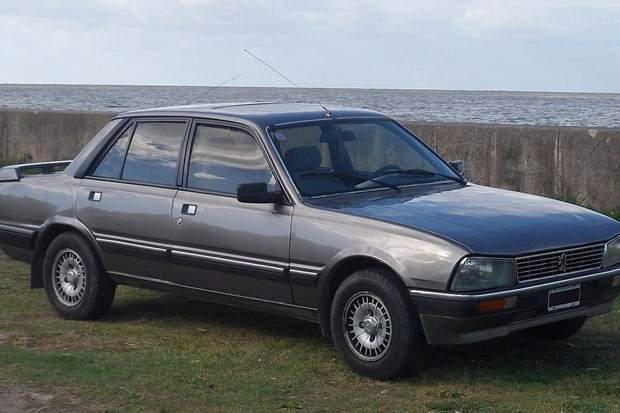
Overview
The 944 marked the mid-point of Porsche’s front-engined sportscar efforts in the ‘70s and ‘80s. It built on the strengths of the successful 924 and introduced some very worthwhile improvements that made it a proper sports car right from its introduction in 1982.
Initially powered by a 122kW 2.5-litre inline-four, 2.7 and 3.0-litres variants were gradually introduced with power outputs peaking at 155kW for the naturally aspirated units. The turbocharged variants made between 162 and 184kW, easily eclipsing the performance of contemporary 911 Carreras and offering far more predictable handling characteristics than the feral 930 Turbo. Driveability and practicality were an improvement on both its predecessor and the 911 but the rear seats were still best suited to shopping bags rather than people.
Sales were strong from the off, the 944 becoming the best-selling model in the marque’s history. Now, 30-years after the final 944 rolled off the production line, the charms of this popular model are still readily apparent. The inherently good build quality and reliable underpinnings have made it a popular classic, and good examples are always in high demand.
What To Buy
Low-mileage cars may be tempting but they can often hide mechanical issues beneath their gleaming paintwork. Well cared for higher mileage cars can often be a better bet although be on the lookout for clocked examples. The incremental evolution that every Porsche road car undergoes makes the later models the most desirable, but thanks to the tried and tested 924 platform it is based on, even the early 944s are appealing.
Aside from the larger capacity engines found in the 1989-on 944s, some may also prefer the facelifted looks that were carried out in 1985. If you like the elegant simplicity of the earlier 2.5-litre models than be aware that U.S. cars produced up to 15kW less than their European counterparts.
Turbos and the 3.0-litre S2 models are always sought after and both offer strong performance with the S2s being a bit more responsive at lower speeds and the Turbo quicker everywhere else. All variants offer reasonable running costs if they have been well maintained and that is why evidence of a solid service history is more important than mileage or model year.
Avoid suspiciously cheap cars as the cost to get them right will be far higher than just buying a sorted car in the first place. For our money a late model S2 coupe ticks a lot of boxes but you may prefer the faster Turbos or the uncomplicated lines of a pre-facelift model, there is no wrong choice here.
Checklist
Annual oil changes are essential to prevent damage to the engine and the timing belt and balance shaft belt should be replaced every four years regardless of mileage covered.
944 S2s had cam chains and these need to be renewed every 160,000-km.
A vibrating engine could point to balancer shaft issues or cracked engine mounts. Turbos are also reliable although inspect the manifold for cracks as this is a pricey part to replace.
Power steering fluid pooling on the floor can sometimes just be from cracked pipes or the reservoir but if it is the pump itself be prepared for a big bill.
Most cars came equipped with a five-speed manual transmission that does not have any inherent problems, clutches can last over 100,000-km miles but replacing them requires the gearbox to be removed so check for any juddering or slippage when on the test drive.
Some cars came with a three-speed automatic that is also reliable but is not ideal for spirited driving. CV joints can lead to drivetrain vibrations if worn out.
The suspension is generally quite tough but check the bushes and shocks for undue wear. A car that tramlines or wallows in corners may need these parts replaced. Brake calipers can seize, especially when not driven regularly although the braking system itself is reliable.
Rust is a problem despite all 944s being galvanised from the factory, accident damage is not uncommon either so check for uneven panel gaps and signs of overspray. Corrosion can set in most frequently around the arches, door sill and boot floor, cars that have spent their lives in the dry highveld climate are far less likely to have corrosion.
The interior layout changed midway through production, pre-1986 cars had a simpler setup mimicking the 924s while newer cars had a more modern oval dash design. Parts are generally available for both setups and the finishes and materials used are hardy. Look out for damaged headlining (especially on sunroof equipped models) and check that the electrics are all working.
Production History
1981: Porsche 944 shown to the public for the first time at Frankfurt Motor Show
1982: 944 coupe released, initially with 122kW 2.5-litre engine, available with a five-speed manual or three-speed automatic transmission
1985: Updated dashboard with better ventilation and numerous other design changes introduced. 162kW Turbo variant goes on sale
1986: 944S with uprated 139kW is introduced. ABS becomes optional
1988: 184kW 944 Turbo S goes on sale and ABS now standard across the range
1989: 155kW 3.0-litre 944 S2 coupe and cabriolet (the first 944 drop-top model) introduced
1990: 944 Turbo now offered in cabriolet body style
1991: 944 production ends
Specifications (S2)
Engine: 3.0-litre sohc inline-four
Power: 155kW
Top Speed: 241kph
0-100kph: 6.5sec







